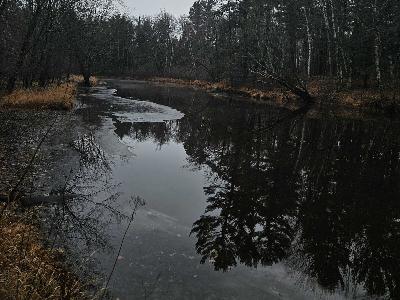Discover WXPR Field Notes
WXPR Field Notes

WXPR Field Notes
Author: WXPR Public Radio
Subscribed: 2Played: 64Subscribe
Share
Description
On the second Tuesday of every month, we hear from our contributors in the field. Susan Knight and Gretchen Gerrish both work for the University of Wisconsin-Madison’s Center for Limnology at Trout Lake Station. Scott Bowe is the Director of Kemp Natural Resources Station.
64 Episodes
Reverse
Many people are aware that trees can be dated by counting the layers of tree rings in a cross section. But, less folks know that fish, snails, mussels, and the teeth of many local mammal species build seasonal growth rings that are used to age individuals.
Horseshoe crabs are one of the strangest critters ever; they are ancient animals who have been on earth for 450 million years and have scarcely changed in all that time.
In this month's installment of Field Notes, Scott Bowe of Kemp Station discusses Ruffed Grouse – a hallmark species in the Northwoods.
One of the many wonderful things about summer is the arrival of fresh and tasty local fruits.
In this month's installment of Field Notes, Scott Bowe of Kemp Station discusses mosquitoes – a favorite insect of the Northwoods.
While they’re famous among anglers, few people realize that Canadian Nightcrawlers—Lumbricus terrestris—have a fascinating biological story all their own, one that stretches across continents and ecosystems.
Though it may be a nuisance in some situations, tag alder has a magic trick – it can fix nitrogen.
In this month's installment of Field Notes, Scott Bowe of Kemp Station discusses frost and roads – all part of managing our sustainable natural resources.
‘Fish’ is one of those words, useful in the image it evokes but less reliable as a lineage, clearly defined.
Otters are mustelids and related to other Northwoods mammals including mink and weasels. They were common throughout North America until Europeans overharvested the animals for their warm, dense and beautiful coats.
In this episode of Field Notes, Lonnie Parry Gillis takes us on an exploration of the fish of Vilas County, Wisconsin—an area blessed with an astounding 1,300 plus lakes.
In this month's installment of Field Notes, Scott Bowe of Kemp Station discusses producers (plants) and consumers (fungi) in the forest world around us.
Seasonal blooms are common and often monitored in warm and high nutrient lakes throughout southern Wisconsin, but are less commonly reported in lakes up north. This makes it challenging to track and manage across the 1,000s of regional lakes.
One of the crops most iconic to our area is ginseng, Panax quinquefolia. Marathon County, just south of Lincoln County is the center of ginseng farming, not just in Wisconsin but it is recognized as the largest source and the best quality of ginseng in the world.
In this month's installment of Field Notes, Scott Bowe of Kemp Station discusses thermally modified wood, a chemical free way to preserve wood for outdoor use.
Salamanders, newts and mudpuppies are amphibians, and they are all salamanders, but not all salamanders are newts or mudpuppies.
In Wisconsin, opening fishing applies to certain species of fish such as walleye, trout, largemouth bass, and northern pike. However, this season opener does not apply to panfish, which are open year-round. Panfish include species such as bluegill, crappie, sunfish, and yellow perch.
There are many kinds of record keeping that scientists use to recapture recent and ancient history
Apple cultivars brought as seed from Europe were spread along Native American trade routes, as well as being cultivated on colonial farms. By the mid 1800s, United States apples nursery catalogues sold 350 of the "best" cultivars, showing the proliferation of new North American cultivars by the 19th century.
Open lakes, no snow, and sweatshirt weather was the scene this December in Vilas County. Much to the chagrin of ice anglers and cross country skiers, El Nino has taken hold and has had many implications for the local people, economy, and ecosystems.





